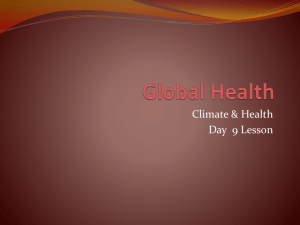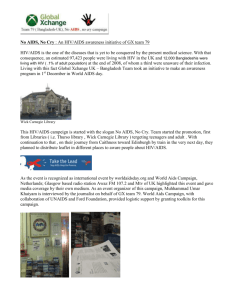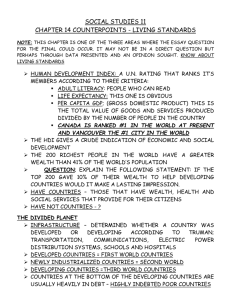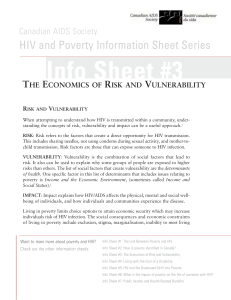ricebowllesson_midsch_mathpercentages
advertisement
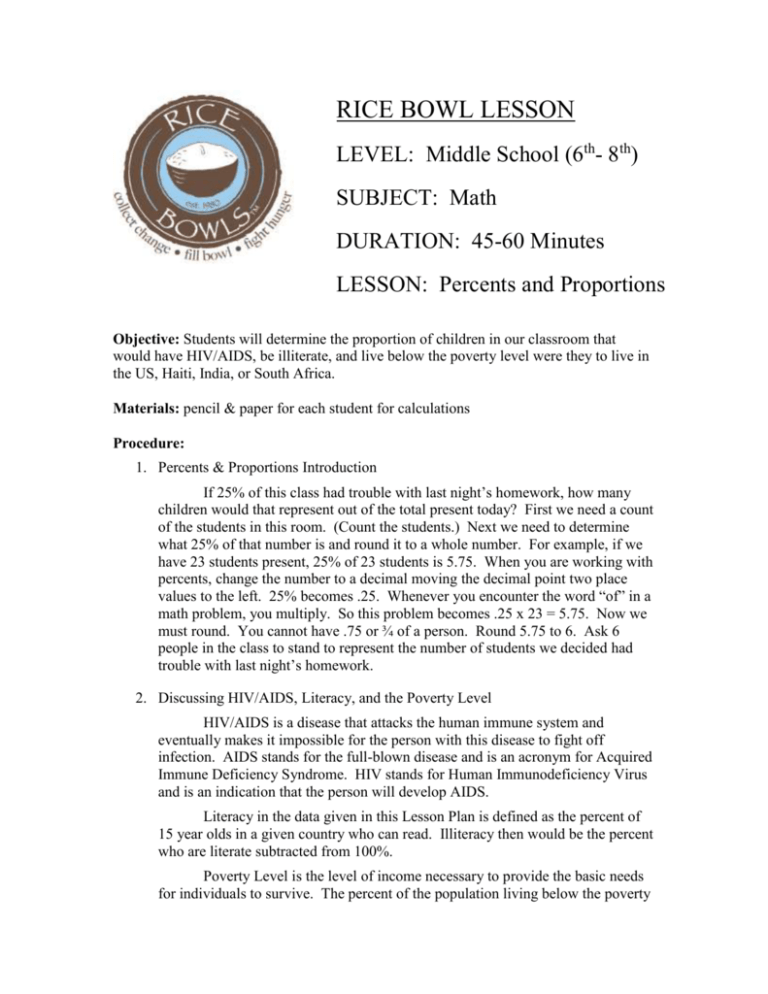
RICE BOWL LESSON LEVEL: Middle School (6th- 8th) SUBJECT: Math DURATION: 45-60 Minutes LESSON: Percents and Proportions Objective: Students will determine the proportion of children in our classroom that would have HIV/AIDS, be illiterate, and live below the poverty level were they to live in the US, Haiti, India, or South Africa. Materials: pencil & paper for each student for calculations Procedure: 1. Percents & Proportions Introduction If 25% of this class had trouble with last night’s homework, how many children would that represent out of the total present today? First we need a count of the students in this room. (Count the students.) Next we need to determine what 25% of that number is and round it to a whole number. For example, if we have 23 students present, 25% of 23 students is 5.75. When you are working with percents, change the number to a decimal moving the decimal point two place values to the left. 25% becomes .25. Whenever you encounter the word “of” in a math problem, you multiply. So this problem becomes .25 x 23 = 5.75. Now we must round. You cannot have .75 or ¾ of a person. Round 5.75 to 6. Ask 6 people in the class to stand to represent the number of students we decided had trouble with last night’s homework. 2. Discussing HIV/AIDS, Literacy, and the Poverty Level HIV/AIDS is a disease that attacks the human immune system and eventually makes it impossible for the person with this disease to fight off infection. AIDS stands for the full-blown disease and is an acronym for Acquired Immune Deficiency Syndrome. HIV stands for Human Immunodeficiency Virus and is an indication that the person will develop AIDS. Literacy in the data given in this Lesson Plan is defined as the percent of 15 year olds in a given country who can read. Illiteracy then would be the percent who are literate subtracted from 100%. Poverty Level is the level of income necessary to provide the basic needs for individuals to survive. The percent of the population living below the poverty line is the percent of people in a given group who do not meet the minimum standard of income to provide those basic needs. In the table, this is indicated as % Poor. 3. Discussing These Statistics for the Four Countries Country USA Haiti India South Africa % HIV/AIDS 0.6 5.6 0.9 21.5 % Literate 99 53 61 86 % Illiterate % Poor 12 80 25 50 Discuss the numbers in the table. This data was found at www.cia.org and was last updated Summer 2008. Fill in the % Illiterate by subtracting the % Literate from 100%. 4. Finding Proportions for Our Class Count the number of students in the room. Based on this number, calculate if we lived in the three other countries listed as well as where we do live (in the US), on average, what proportion of this class would be poor, illiterate, or carrying HIV/AIDS. As an example, using the number of students in our class, find the proportion of people in the US below the poverty line. Say we had 23 people in our class as in the very first example we did. If 12% of those (see table) are poor, that would mean .12 x 23 = 2.76 people are poor. This rounds up to 3. Three students in the class would stand to represent the proportion of poor in the US to the rest of the population (the part of the class who are seated). Use the other numbers in the table and solve other calculations. The students need to use their pencils and papers to work out the problems. 5. Discussion Were the students surprised by the data? Did they have any difficulty with the math? What was most shocking to them? How do they feel about living in the US based on the statistics presented in this lesson? What did they learn from this lesson? Percentages for HIV/AIDS, literacy, and poverty were found on the Central Intelligence Agency’s web-site www.cia.org.



